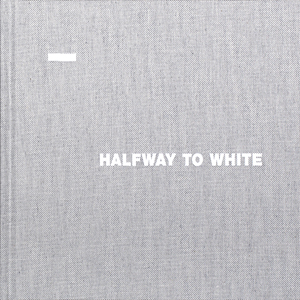 For the inaugural release in their new Folio sub-imprint, Touch has paired Mika Vainio with photographer Joséphine Michel for a joint photography and music project heavily focused on the abstract nature sound and its impact on the other senses and mediums. With heavy use of white exposure on the photographs, and the heavily treated use of white noise on the CD, it culminates in a very strong synthesis of audio and visual.
For the inaugural release in their new Folio sub-imprint, Touch has paired Mika Vainio with photographer Joséphine Michel for a joint photography and music project heavily focused on the abstract nature sound and its impact on the other senses and mediums. With heavy use of white exposure on the photographs, and the heavily treated use of white noise on the CD, it culminates in a very strong synthesis of audio and visual.
Compared to his recent albums, Vainio's audio contributions to this project are more abstract and deconstructed than his busier, often rhythm tinged work.He utilizes expansive passages of silence (white space) amongst blasts of noise and strange frequencies that sound anything but identifiable."Fade from Black," for example, features Mika melding the large passages of silence with heavy, almost imperceptibly low frequencies tones and glassy resonations.
At the conclusion of the album, "White Out," is less rooted in silence but features the same subwoofer destroying bass frequencies.A rising and falling electronic hum from what sounds like processed white noise stays consistent throughout the piece.Towards the end, bits of what sounds like actual melody appear and result in him creating the most traditionally musical sounding piece on the disc.
"Missing a Border" is a noisier excursion, with bits of what almost sounds like a conventional synthesizer heavily processed and demolished.Even though it is one of the more kinetic and noisier pieces, it still never becomes too overwhelming or aggressive, barring the overly shrill ultrasonic bits that sharply cut through.Bleak and moody are the best ways to describe "Notes On the Exposure," a slowly expanding piece of midrange digital noise that is less of a dominating sound.
It is on "Lines of a Curve" that the sound I most associate with Vainio’s body of work.Sequences of pitch bent clicks and pops scatter about, resulting in the loosest semblance of rhythms.Much of the piece is made up of crackly textures, with buzzing noise and silence blended in, and oddly disorienting Doppler effect heavy passages of sound.
Michel’s photography, sourced from a digital camcorder, may differ in its technological nature from Vainio’s analog instruments, but the presentation complements it perfectly.Natural and man-made structures feature heavily in her work, as do candid photographs of people in industrial spaces.While critiquing photography is not at all my forte, her heavily white-drenched digital stills, with odd color artifacting, and often overlaid with found patterns and textures, look as Vainio’s music sounds.
As the Touch label continues into its fourth decade of activity, Halfway to White is a contrast to its early days.While before the label would issue compilations on cassettes paired with small run magazines, now they are working in the media of high quality digital recordings and beautifully bound, art edition quality books.Vainio's and Michel's work compliment each other splendidly on here, and the result is a fully realized collaboration between two distinct and exceptional artists.
samples:
 
Read More

